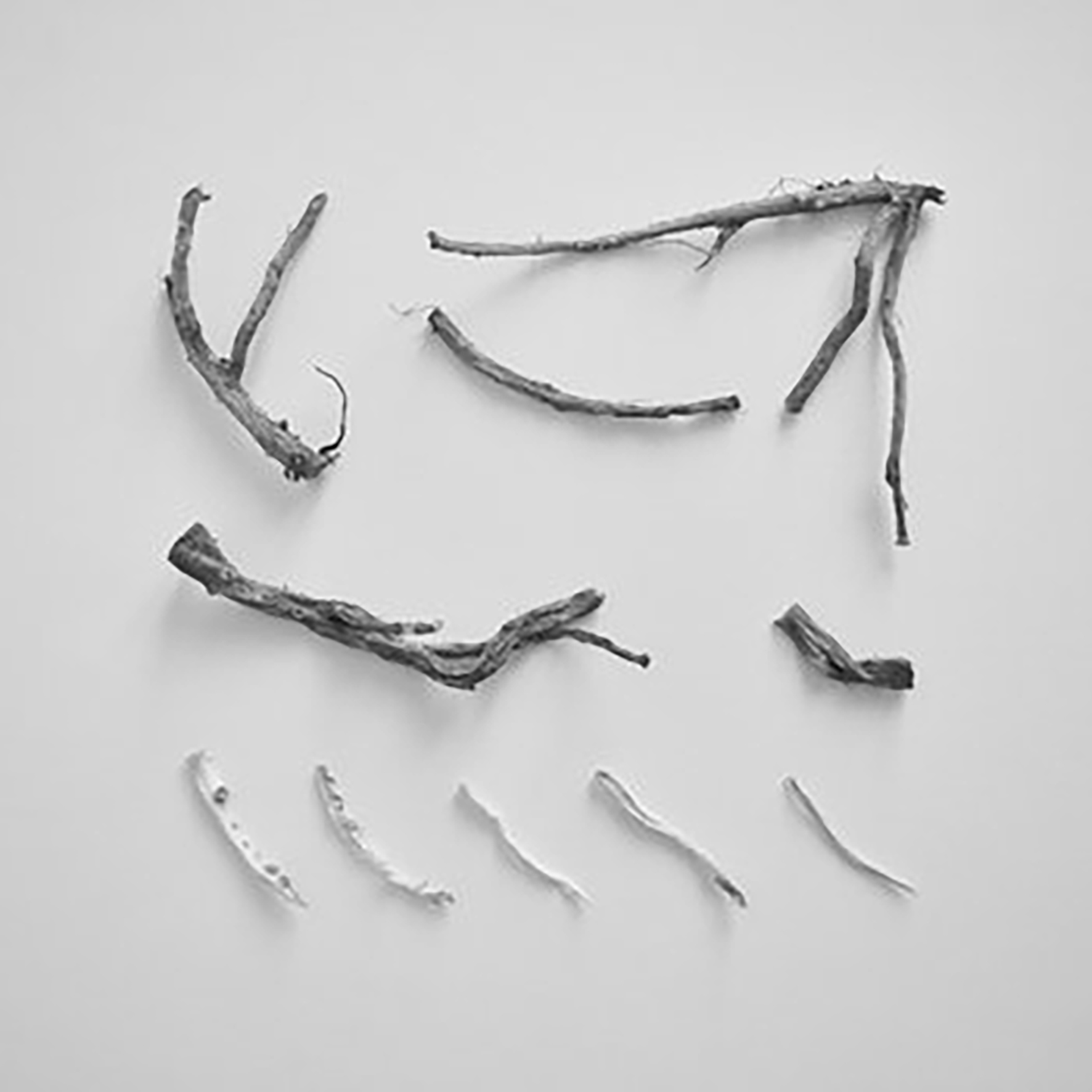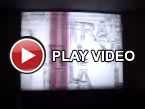Richard Skelton, "These Charms May Be Sung Over A Wound"
 As a longtime and somewhat obsessive fan, I am always eager to hear any new Richard Skelton project, but it is fair to say that his discography has become an increasingly varied, unpredictable, and prolifically expanding world to navigate in recent years. While I would hesitate to describe this latest release as "back to basics" or a return to form of any kind, These Charms May Be Sung Over A Wound is nevertheless an unambiguously significant album for Skelton, as it is both his first vinyl release in roughly a decade and an extremely rare departure from his own Aeolian/Corbel Stone Press imprints. As befits such an auspicious event, the album unveils yet another new stage in Skelton's restless creative evolution, expanding upon the epic scope of his recent heavy drones towards both increasingly industrial textures and a more melodic and harmonically complex sensibility than usual. While I personally welcome the latter more than the former, These Charms is easily the most ambitious and substantial stand-alone opus that Skelton has released in years.
As a longtime and somewhat obsessive fan, I am always eager to hear any new Richard Skelton project, but it is fair to say that his discography has become an increasingly varied, unpredictable, and prolifically expanding world to navigate in recent years. While I would hesitate to describe this latest release as "back to basics" or a return to form of any kind, These Charms May Be Sung Over A Wound is nevertheless an unambiguously significant album for Skelton, as it is both his first vinyl release in roughly a decade and an extremely rare departure from his own Aeolian/Corbel Stone Press imprints. As befits such an auspicious event, the album unveils yet another new stage in Skelton's restless creative evolution, expanding upon the epic scope of his recent heavy drones towards both increasingly industrial textures and a more melodic and harmonically complex sensibility than usual. While I personally welcome the latter more than the former, These Charms is easily the most ambitious and substantial stand-alone opus that Skelton has released in years.
I once had a friend who was convinced that a band could only be great for either three albums or five years.Obviously, there are a handful of exceptions and a number of impassioned debates that can be had on the subject, but I was nevertheless struck by how often that pronouncement proved to be true.While bands tend to involve multiple creative forces interacting with one another rather than just one overarching vision, it does often seem like there is a finite amount of inspiration and that it inevitably runs its course after just a few releases.Consequently, I am always somewhat astonished when an artist like Richard Skelton comes along and manages to convincingly reinvent himself again and again to release a series of great albums that share little in common with one another.Obviously, collaborating with Autumn Richardson played no small role in keeping Skelton's ideas from growing stale or repetitive, but the more significant factor seems to be that he is a fundamentally curious and deep-thinking fellow who regularly draws inspiration from esoteric and non-musical sources.Uncharacteristically, those inspirations are less explicit than usual for These Charms May Be Sung Over A Wound, but Skelton does note that the album is "intricately and indelibly" bound to his regional landscape (in this case, the valleys along the Scottish border).In that regard, These Charms May Be Sung certainly seems to adhere to the same geological time scale and scope that has informed many other recent Skelton releases.The twist this time around is that the textures that Skelton employs have rarely been less organic and earthy.That newly industrial-inspired aesthetic is best exemplified by the first song that surfaced from the album ("For The Application of Fire"), which slowly transforms a ringing bass motif into something akin to a mechanized and relentlessly forward-moving juggernaut.
For the first third of the album, however, Skelton's more industrial textures are beautifully intertwined with genuine human warmth and a poignant emotional undercurrent.If I have one minor grievance with Skelton's major statements over the last couple of years, it is that his geologic scale and inspirations leave little room for human-scale tenderness and emotion.Obviously, on the rare occasions when Skelton manages to convincingly evoke shifting tectonic plates or a collapsing star, I am perfectly fine with that absence and I am more than happy to just sit back and enjoy the spectacle.Nevertheless, the vulnerability and soul at the heart of pieces like "For Either Deadened or Undeadened" is a welcome return to the more raw and honest emotional intensity of Skelton's classic Type albums (though the emotions here tend to be more bittersweetly radiant than they were in his darkly cathartic early days).In any case, "For Either Deadened or Undeadened" is an absolutely gorgeous piece, simultaneously evoking the slow, sensuous curl of smoke and a sun-dappled autumn landscape.Elsewhere, the tone of "Against All Tendernesses of the Eye" is a bit more ambiguous, but it is similarly successful, as Skelton slowly builds from a foundation of low, oscillating drones into a heavenly crescendo of gently shimmering and quivering harmonies.
When the album arrives at "For The Application of Fire," however, the mood quickly descends into darker territory and mostly remains there.For the most part, the pieces that comprise the second half of the album share an aesthetic centered around slow-motion swells of layered drones, shifting harmonies, and sharp feedback-like textures.Surprisingly, however, there is also the recurrent hint of a beat.On pieces like the wonderfully gnarled and slow-burning "For a Swarthened Body," the deep, subterranean throb remains merely a hint, but both "Against Bite and Rend of Snake" and "For All Cleansings" include enough other rhythmic elements to almost approximate a strain of slow-motion, deconstructed dub-techno (or at least something consistent and machine-like).At the risk of sounding crazy or delusional, I genuinely believe that there is an actual high-hat being played in "Against Bite and Rend of Snake," though it is certainly possible that Skelton is just extremely good at rhythmically harnessing hiss.
Notably, the album borrows all of its titles from "19th-century translations of Anglo-Saxon leechdoms," which are "ancient medicinal remedies" that sometimes "required the recitation of charms to aid the efficacy of the cure."In keeping with that theme, this release is billed as a sort of album-length incantation against fear and darkness.Sadly, I cannot offer a definitive assessment on this release's latent supernatural powers, but I can conclusively state that these songs offer a vivid and immersive listening experience that makes quite an effective (if temporary) escape from reality (particularly when intensified through headphones or extreme volume).At this point, only "For Either Deadened or Undeadened" has fully earned a place in the imaginary "Richard Skelton's Greatest Hits" collection that exists in my head, yet the individual songs on this album are secondary to the deeper, more sustained whole, which is a mesmerizing feast of richly textured, slow-burning transformations executed with a sublime lightness of touch.Moreover, Skelton's dalliance with industrial textures arguably brings his own aesthetic even closer to the aesthetic of the natural world, as ugly harmonies and buzzing, blackened textures are inextricably intermingled with moments of genuine beauty (just like the natural world includes both rapturous sunsets and gazelles being ripped apart by lions).I suspect there is probably a lot more that can be read (or projected) into These Charms May Be Sung that has not occurred to me yet, but the true value of Skelton's conceptual ambitions lies primarily in the fact that they led him to make one hell of a great album.At the present time, there are still a few other Skelton releases that I would categorize as "somewhat more crucial" than this one, but Charms conclusively belongs in the pantheon of his finest releases and it only seems to get better as additional details and layers emerge with subsequent listens.
Samples can be found here.



